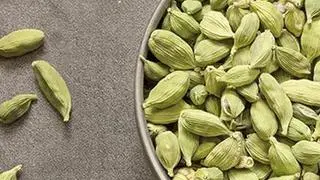India's all-time high coffee exports in 2010-11 may not recur in 2011-12.
Speaking to Business line on the sidelines of the Coffee Board's “Coffee Awards Nite” function, Mr Ramesh Rajah, President, Coffee Exporters' Association, observed: “The export performance is unlikely to be repeated in 2011-12, as whatever is produced would have to be shipped. There are no carryover stocks left.”
Industry observers said that the export performance in 2010-11 – a record three lakh tonnes yielding $758 million (Rs 3,488 crore) as on March 18 – was a result of a bumper crop and high international prices, rather than the emergence of new markets for Indian coffee.
However, high prices may persist in 2011-12, particularly in the wake of arabica output concerns in Central America and Brazil. This could rub off on robusta prices as well, industry observers said.
Mr Nishant Gurjer, Managing Partner, Kaapi Royale, an exporter of premium robustas, said: “The inquiries at present are better than last year.”
On robusta prospects, Mr. Rajah said: “Shipments are expected to be good from India over the next couple of months, but after that one cannot be sure. Usage of robustas has increased and Vietnam growers are holding back on sales, resulting in higher prices in the short term.”
Disaster-hit Japan is not expected to play a major role in 2011-12 exports.
Mr Rajah said: “There might be a marginal effect on exports to Japan, as the levels are already low. Moreover, it remains to be seen whether the disaster leads to Japanese cutting down on coffee consumption.”
India's exports to Japan, the world's fourth largest coffee consumer, fell from 5,955 tonnes in 1998-99 to 1,110 tonnes in 2009-10. A controversy over the presence of lindane in India's washed robustas years ago, owing to the water being used in the fermentation process, contributed to the decline in exports.
A delegation to Japan of planters and Coffee Board officials in mid-2010 sought to dispel such apprehensions, leading to a revival of interest. “New entrants would suffer as a result of the setback in Japan,” Coffee Board officials said.
On the 2010-11 export performance of three lakh tonnes (up to March 18), against 1.9 lakh tonnes in the corresponding period last year (yielding $414 million or Rs 2033 crore), Mr M. P. Devaiah, General Manager, Allanasons said that it was a result of better production and good prices, rather than the emergence of new markets.
Mr Gurjer said: “India has been able to benefit from output concerns in arabica the world over.”
“In the last quarter of 2010-11, India may have benefited from relative differentials in relation to the terminal prices,” Mr Devaiah said. Industry observers said that during the earlier part of the year, India's export surge was output-driven.
“As against entering into long-term contracts, buyers have been buying in the short-term as a result of high prices,” Mr Devaiah said.
Meanwhile, Coffee Board Chairman, Mr Jawaid Akhtar, said, “The export awards are part of a twin strategy to strengthen our share in traditional markets on the one hand and making our presence felt in USA, Canada, Japan, Australia and New Zealand.”
Awards were distributed to the top coffee exporters for 2009-10 and to those estates who excelled in cupping quality, the latter being called ‘Flavour of India – the Fine Cup award cupping competition.
The arabicas of Badnekhan Estate were adjudged the best, while Harley Estate bagged the award for the best robustas.







Comments
Comments have to be in English, and in full sentences. They cannot be abusive or personal. Please abide by our community guidelines for posting your comments.
We have migrated to a new commenting platform. If you are already a registered user of TheHindu Businessline and logged in, you may continue to engage with our articles. If you do not have an account please register and login to post comments. Users can access their older comments by logging into their accounts on Vuukle.